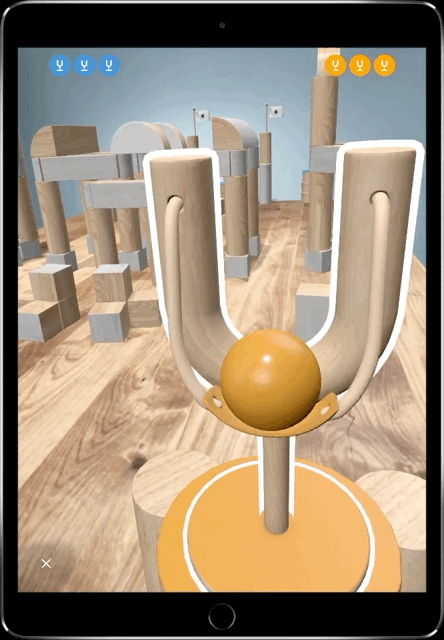Inside SwiftShot: Creating an AR Game
Inside SwiftShot: Creating an AR Game
WWDC 2018
SwiftShot Internals
- Establishing a shared coordinate space
- Networking and state sharing
- Physics
- Asset import and management
- Flag simulation
- Dynamic audio
ARKit — Establishing a shared Coordinate Space
- Image detection
- Object detection
- World Map sharing
- iBeacons for fixed installations


Sharing a World Map
1. Saving
- First device scans area, captures features
- Asks
ARSessionfor world map - Serializes to dist

2. Ad-hoc gaming
Share over network
- Peer-to-peer network connnection
- Encrypt data in flight
- UI guidance to aid delocalization
3. Fixed installations
- Prerecord world maps for specific installation areas
- Distribute to managed devices
- Use iBeacons to automatically select correct world map for each location
4. Loading

5. Privacy
ARWorldMap uses features of the world around you
- No latitude/ longitude information
- May include personally identifiable information
Treat serialized ARWorldMap as user-private data
- Encrypt at rest and in motion
- Obtain user consent for extended usage
6. ARAnchor
ARAnchor represents a location and orientation in the physical world
- ARKit adds anchors for planes, objects, and images
- Also, created and added via API


Networking with Multipeer Connectivity
- Peer-to-peer connectivity, no central server
- Encryption and authentication are built in
- Advertisement and discovery
- Device starting the game creates a session, starts advertising
- Other devices see session listed in menu
- User selects game to join
- Device sends request
- Advertising device accepts or denies - Once session set up, devices are peers in the network
- API to send
- Data packets
- Resources as URLs
- Streams - UDP for transport
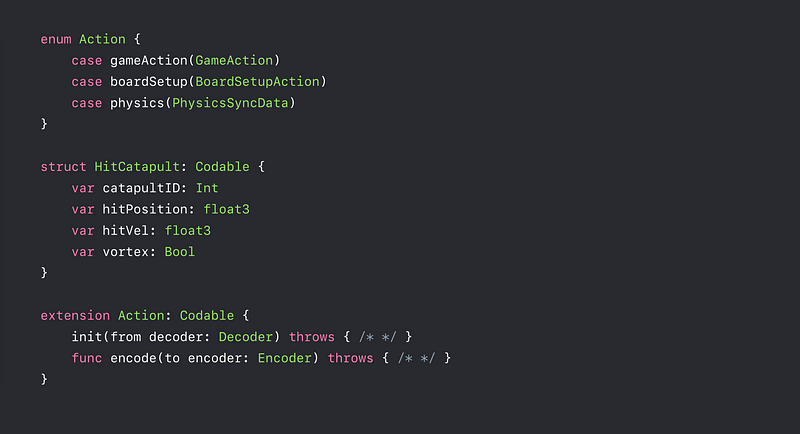

Physics
- SceneKit physics
- All peers run physics simulation
- Server sends updates to client to ensure synchronization
- Only game state relevant information is shared
- Object scaled approximately 10x for better performance
Physics Data Optimization

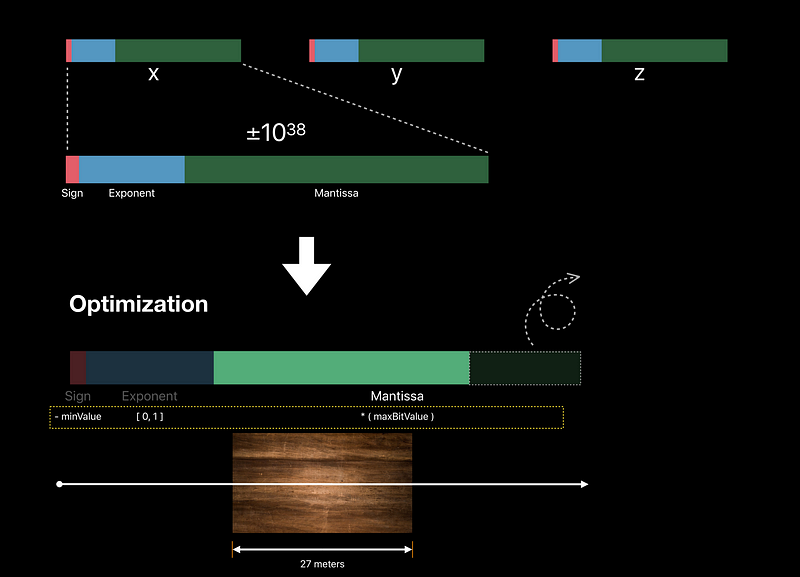

Encoding — BitStream
- Bit-packed encoding of values
- Minimum size, fast serialization and deserialization
- Purpose-built for network communications of binary data
- Not suitable for persistence
- Not robust in face of changing data scheme
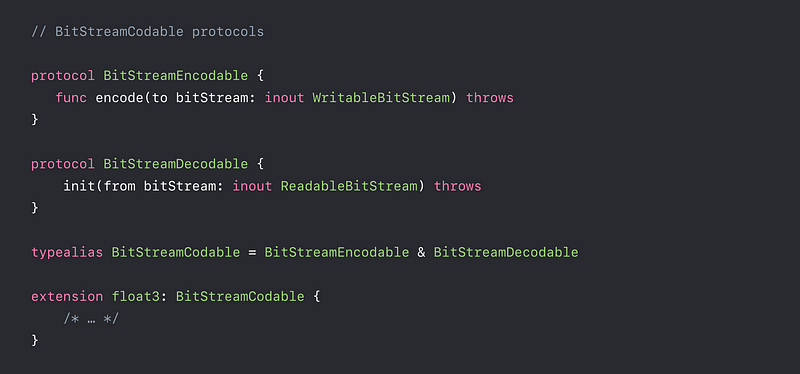
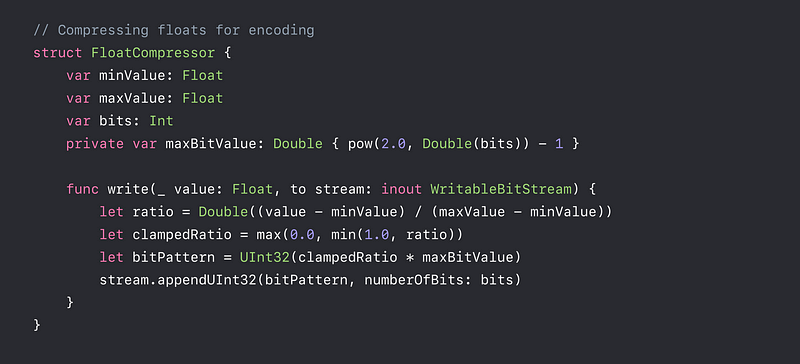
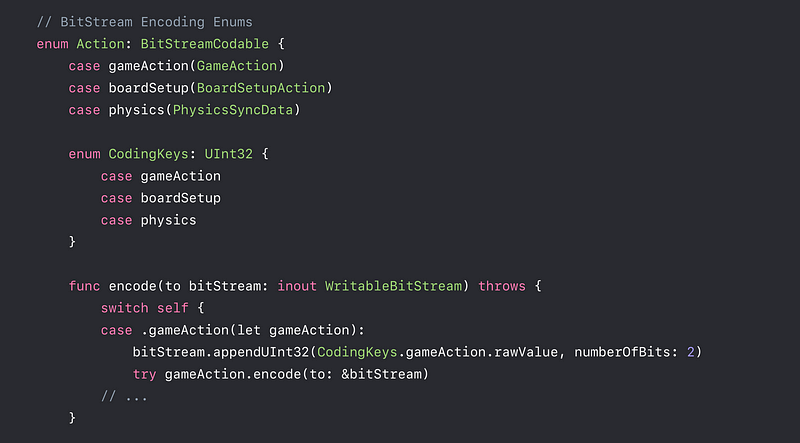


Combining Encodings
- Physics data encoded in BitStreams
- Other commands encoded with Swift Codable, binary property lists
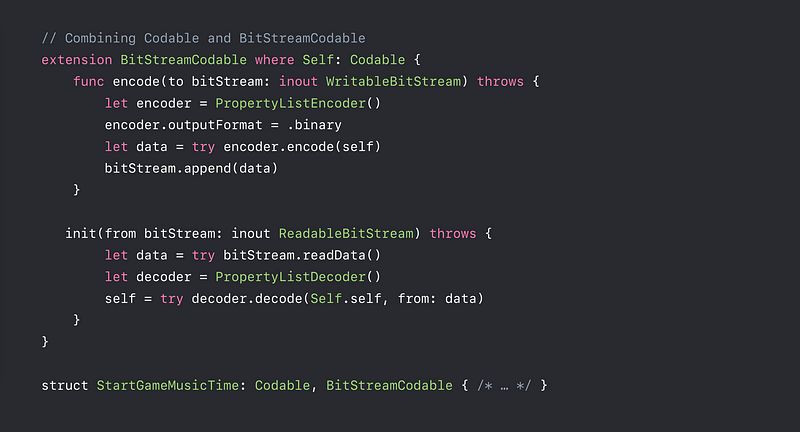
Assets for Game Levels
Use level of detail to optimize for different distance
- Nearby objects get chamfered edges on blocks
- Distant objects get less detailed textures, fewer polygons
Physics bodies are the same
- Use predefined types (box, sphere, etc) wherever possible for performance
SceneKitwill build convex hull if not otherwise specified
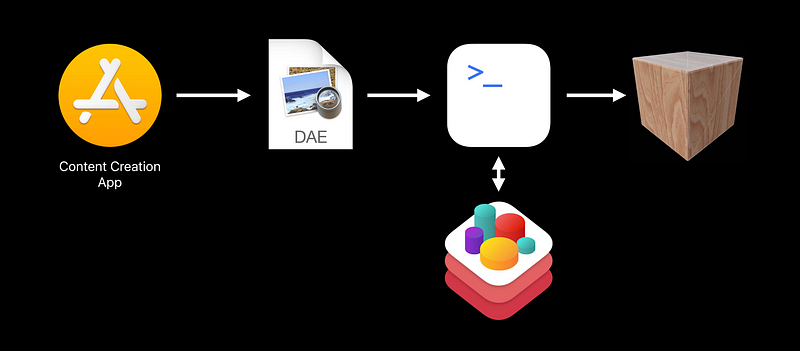
Flag Simulation
- SceneKit static asset
- Swift class
- Build metal
- Apply results back to SceneKit model - Metal compute shader
- Computes forces in a mesh
- Produces vertices and shadows

Audio in SwiftShot
- Positions sounds in the world
- Limit app size
- Leverage MIDI instrument support from
AVFoundation
